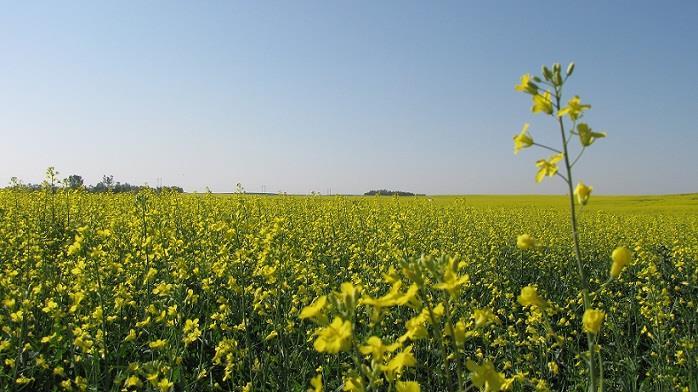Released on July 20, 2017
Crops are developing quickly but normally in much of the province, according to Saskatchewan Agriculture’s weekly Crop Report.
Seventy-one per cent of fall cereals, 62 per cent of spring cereals, 61 per cent of oilseeds and 70 per cent of pulse crops are at their normal stages of development for this time of year. Many areas in the province remain very dry and crop conditions continue to decline due to hot temperatures and lack of rain.
Livestock producers now have 20 per cent of the hay crop cut and 59 per cent baled or put into silage. Hay quality is rated as 13 per cent excellent, 54 per cent good, 26 per cent fair and seven per cent poor. Many hay swaths are significantly smaller than normal and hay will be in short supply this year in some areas.
Hay yields are below average overall. Estimated average dryland hay yields for the province are 1.2 tons per acre for alfalfa; 1.0 ton per acre for alfalfa/bromegrass; 0.96 tons per acre for other tame hay; and 1.4 tons per acre for greenfeed. Estimated average irrigated hay yields are 1.9 tons per acre for alfalfa; 2.0 tons per acre for alfalfa/bromegrass; and 1.8 tons per acre for greenfeed.
Pasture conditions continue to decline due to lack of rainfall.
The majority of the province received very little, if any, rain this past week; however, the Pelly area reported receiving 60 mm. Many areas have not received any significant rain for a number of weeks. Topsoil moisture is quickly deteriorating and rain is needed for crops to fill and for topsoil to be replenished.
Across the province, topsoil moisture on cropland is rated as three per cent surplus, 32 per cent adequate, 43 per cent short and 22 per cent very short. Hay land and pasture topsoil moisture is rated as three per cent surplus, 26 per cent adequate, 37 per cent short and 34 per cent very short.
Sources of crop damage this past week include hail, wind, localized flooding, diseases such as sclerotinia and insects such as aphids and wheat midge. The high temperatures have caused heat blasting damage in many flowering canola crops.
Producers are haying, scouting for pests and getting ready for harvest.
A complete report is available online at www.publications.gov.sk.ca/documents/20/100034-Crop%20Report%20for%20the%20Period%20July%2011%20to%2017%202017.pdf.
Follow the 2017 Crop Report on Twitter at @SKAgriculture.
-30-
For more information, contact:
Shannon Friesen
Agriculture
Moose Jaw
Phone: 306-694-3592
Email: shannon.friesen@gov.sk.ca

